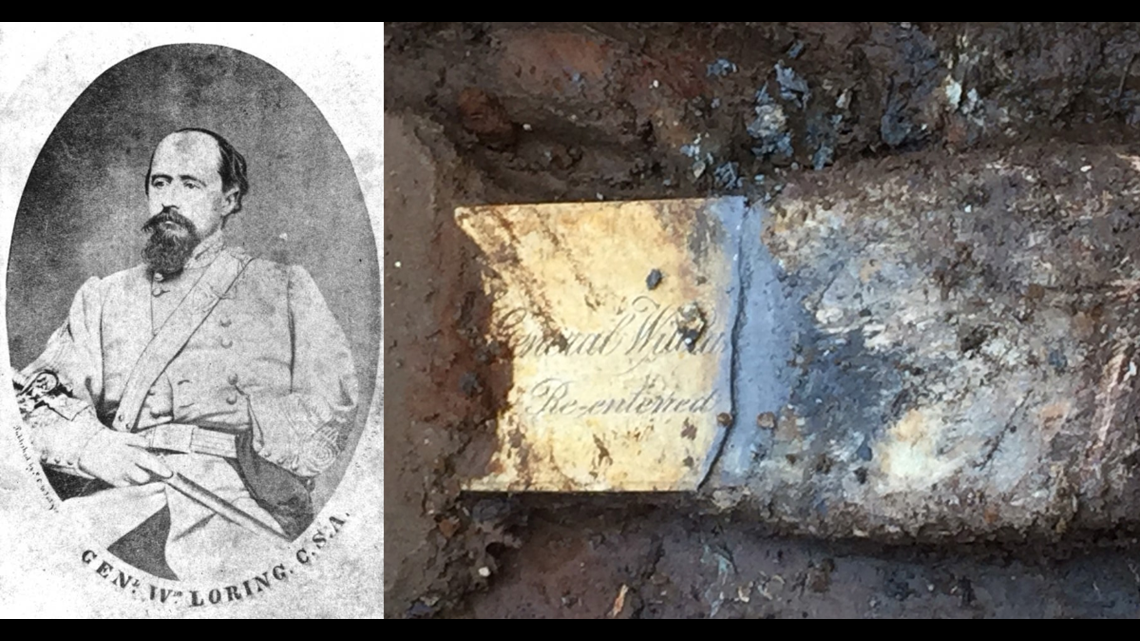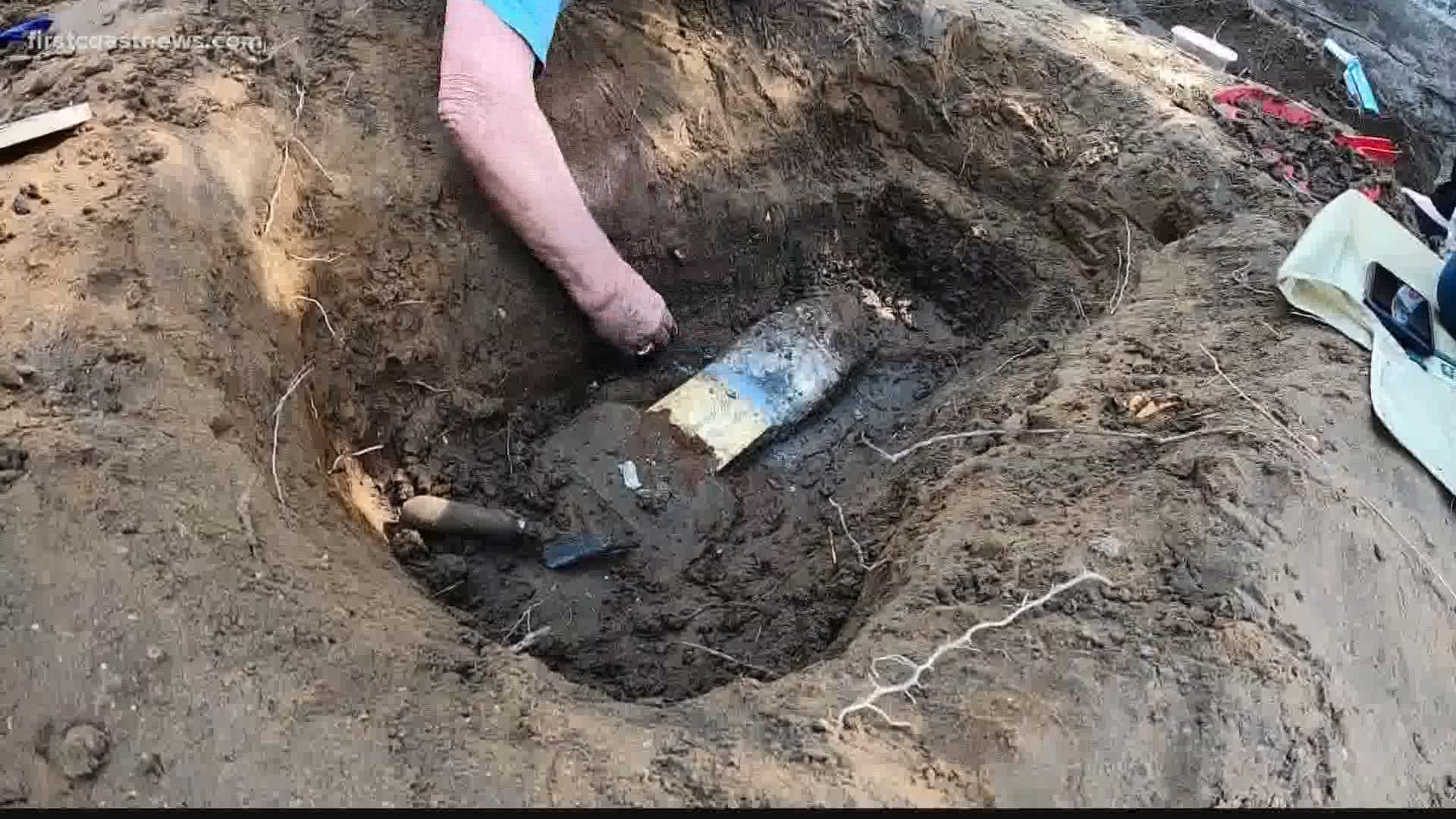ST. AUGUSTINE, Fla. — Roughly a century after being buried, a Confederate general's remains are being exhumed.
On Wednesday, archaeologists believe they found Gen. William Loring's remains within a container that was buried underneath his memorial in downtown St. Augustine. That memorial, an obelisk, was removed on Monday as part of the relocation process to the Trout Creek Fish Camp.
His descendants asked the University of Florida, which manages the property, for Loring's ashes and memorial to be removed.
Archaeologist Kathleen Deagan carefully worked the exposed soil. She and UF personnel found a name plate which has the words "General William ... Re-entered" written in cursive. Parts of a sword and its scabbard, believed to be his, were also found.
Story continues below.
Other items were also found in the dirt, however it was difficult to know with certainty what they were because of water intrusion.
"The swords are very rusty, already broken in place." Deagan said.
All of the items found will be reburied with Loring’s remains in a cemetery. So what was placed with him will stay with him.
Deagan said UF wanted to make sure nothing in the ground "was disturbed, overlooked or hurt an in any way."
When the remains were found, those onsite FaceTimed one of the general's descendants who seemed very happy about the actions.
All of the items and remains were respectfully placed in a hearse Wednesday afternoon.
Loring died in New York in 1896 where it was reported that he was cremated. His remains were transported to St. Augustine where he was buried at a cemetery. Later, in 1920, they were placed underneath his memorial by the United Daughters of the Confederacy, the St. Augustine Record reports.
His memorial is being relocated to Trout Creek Fish Camp, the same location where the City of St. Augustine's Confederate memorial will be moved.
Who is William Loring?
The following information was gathered by American History Central:
- Loring was born in 1818 in Wilmington, N.C. At the age of 4, his family relocated to St. Augustine
- His military career began at a young age; at the age of 14 where he joined the Florida militia fighting in the Seminole Wars
- He's believed to have run away to Texas at the age of 17 after the Fall of the Alamo where he fought in the Texas War for Independence. His father reportedly forced Loring to return to Florida
- Back in Florida, Loring fought in the Second Seminole Wars. During then, he was promoted to 2nd Lieutenant in 1837 around the age of 19
- Loring studied at Georgetown University from 1839 to 1840 in Washington D.C., but returned to study law in Florida. He was admitted to the Florida bar in 1842
- Loring was elected to the Florida House of Representatives from 1843 to 1845 before Florida became a state on March 3, 1845
- Loring became captain of the U.S. Army's Regiment of Mountain Riflemen in 1846 where he initially protected the Oregon Territory during the California Gold Rush. He then fought in the Mexican-American War, going up the ranks several times from major to lieutenant colonel then colonel
- Loring had his arm amputated after a bullet shattered it at the storming of the Chapuletepec Castle during the Mexican-American War
- After the war in 1859, Loring spent time in Europe then came back to command the Department of New Mexico in 1861
- After hearing about the Civil War, Loring sided with the South and resigned from the U.S. Army. He later accepted a position as brigadier general within the Confederacy on May 20, 1861. He was later promoted to major general in 1862. Was present during the surrender in North Carolina in April 1865
- Loring earned the nickname of "Old Blizzards" at the Battle of Fort Pemberton; he cheered with his men, "Give them blizzards, boys!"
- After the Civil War, he went to Egypt where he served nine years in the Army of Isma'il Pasha, the Khedive of Egypt
- He returned to Florida, ran for Senate, but lost. He relocated to New York and died in 1896 from pneumonia
- Loring was cremated in New York. His ashes were exhumed and later moved to a cemetery in St. Augustine. In 1920, his remains were then taken to his memorial in downtown St. Augustine
- About 100 years later, Loring's ashes are being moved to a cemetery



